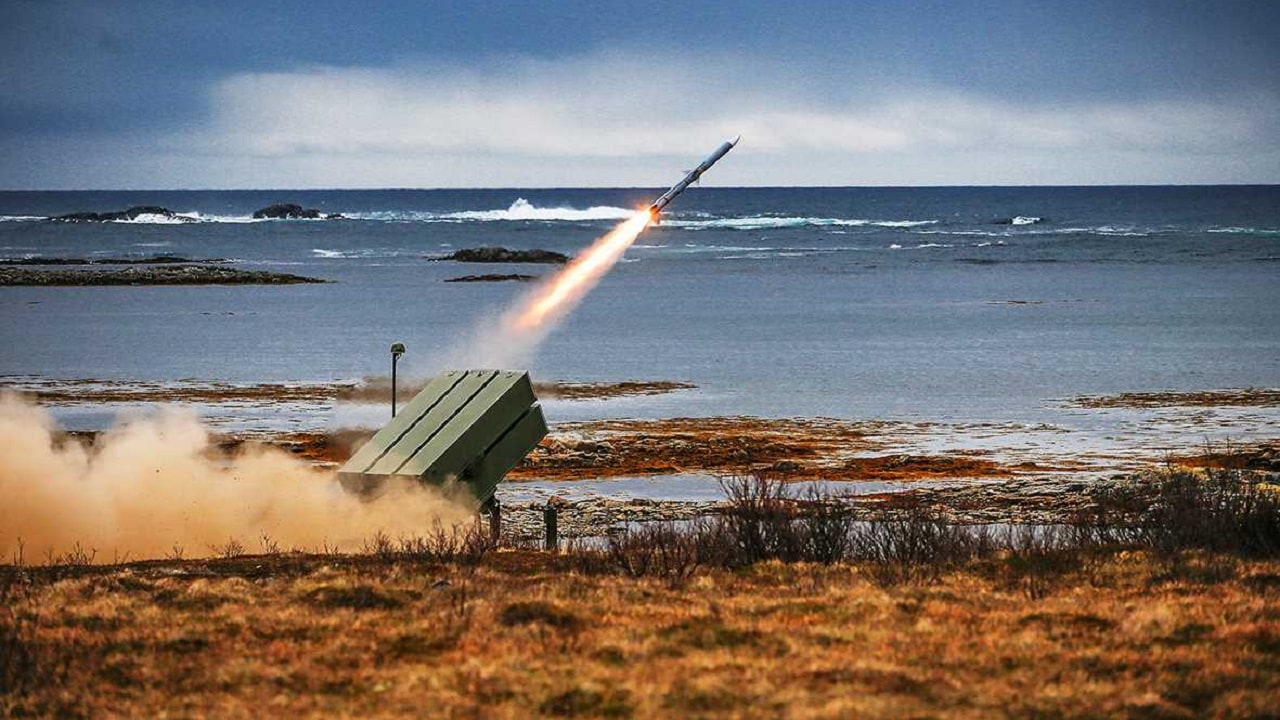Advanced NASAMS air defenders are one step closer to reaching Ukraine. Two of the National Advanced Surface-to-Air Missile Systems have been delivered by Raytheon to the U.S. military for ultimate transfer to Kyiv. NASAMS can destroy drones, ballistic missiles, helicopters, and warplanes. U.S. Secretary of Defense Lloyd Austin said in a news conference on October 27 that NASAMS will provide the air defense capability that Ukraine needs. Austin also revealed that the United States will be training Ukrainian crews on NASAMS operations.
Eight NASAMS Are on the Way
In total, Ukraine expects to receive eight NASAMS batteries from the United States. Two systems were featured for the $820 million military aid package on July 1. Six more were included in the $3 billion August 24 aid installment.
Ukraine Civilian Targets Are Taking a Pounding
NASAMS is a joint program from Raytheon and Norway’s Kongsberg defense contractor. This latest installment comes at a time when Russia is targeting critical infrastructure such as power plants and the electrical grid along with water treatment facilities. These attacks feature drones and cruise/ ballistic missiles and NASAMS could help even the score against Russia. President Joe Biden had promised more NASAMS to Ukrainian President Volodymyr Zelensky in early October.
Missile Defense Is Key to the War’s Outcome
The United States wishes to send six additional NASAMS batteries to Ukraine in the coming months. Eastern European countries are ordering Raytheon’s other missile defense systems and that demand has increased since the war started in Ukraine.
The Ukrainian military is worried that the Russian saturation strikes will deplete existing air defense interceptor missiles and allow attacks on civilians to continue unabated.
NASAMS Actually Fires Air-to-Air Missiles
NASAMS entered service in 1998. Kongsberg designed and built the launchers and Raytheon produced the interceptors. It is a system that can be used at nights and in poor weather. It mainly fires the AIM-120 AMRAAM (Advanced Medium-Range Air-to-Air Missile) and AIM-9X Sidewinder missiles for shorter range intercepts. Its radars can pick up a target 360 degrees around the system and destroy it beyond visual range. Each NASAMS battery has three launchers with a range of 25 miles. NASAMS are also used by Spain, Finland, the Netherlands, and a host of Middle Eastern countries.
Defense Against Scores of Incoming Bogeys
NASAMS can track up to 72 targets at once. Each launcher can deploy up to six interceptors. It has a separate command and control unit, but the full battery is highly-mobile.
Radar and Sensors Are Top-notch
Raytheon is proud of NASAMS’ new Ghost Eye radar – a sophisticated sensor that can detect incoming bogeys earlier and more accurately eliminate them. An older Sentinel that is a passive electro-optical and infrared sensor, comes on earlier NASAMS. The system can be integrated with other air defense capabilities among NATO members.
It’s Good Enough For the Americans to Protect the Capital
The Ukrainians are likely to deploy the first NASAMS in Kyiv. The U.S. military has used NASAMS to protect the Washington, DC area since 2005. But Ukraine will need more NASAMS batteries to completely guard civilians. “Believe me, it’s not even nearly enough to cover the civilian infrastructure, schools, hospitals, universities, homes of Ukrainians, Zelensky has said.
Keep People from Migrating to Other Countries
Zelensky fears that more Ukrainians will leave the country if the power and water and sewer services go out due to Russian missile attacks. If critical services can be kept on, perhaps more refugees will return.
The shipment of eight NASAMS will help Ukraine, but Zelensky will likely lobby for more. It will be interesting to see how well they work because Russia has intensified its attacks with missiles and Iranian loitering munitions, also called suicide drones. One impressive aspect of missile defenders provided by the United States, is how the Ukrainians soldiers can be trained successfully on such a sophisticated system. This is a testament to how well the Ukrainian army is fighting overall and training on donated weapons systems will be a paramount factor if Ukraine is to win the war.
Expert Biography: Serving as 1945’s Defense and National Security Editor, Dr. Brent M. Eastwood is the author of Humans, Machines, and Data: Future Trends in Warfare. He is an Emerging Threats expert and former U.S. Army Infantry officer. You can follow him on Twitter @BMEastwood. He holds a Ph.D. in Political Science and Foreign Policy/ International Relations.

